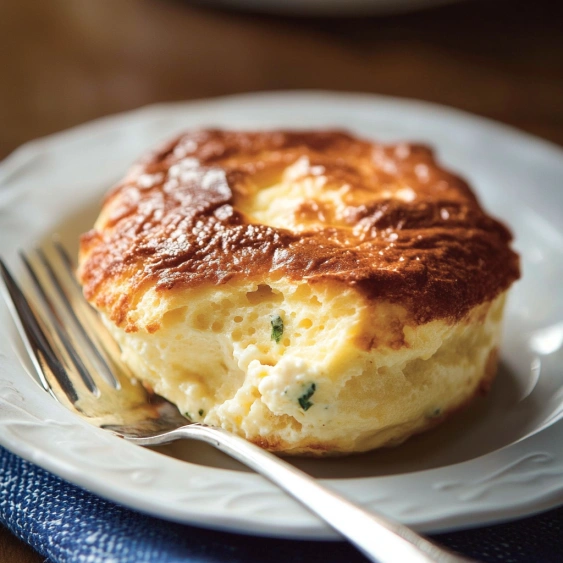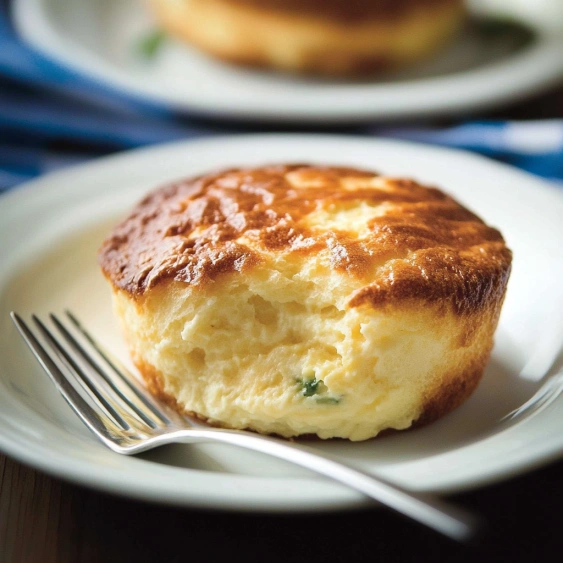 Pin it
Pin it
This classic cheese soufflé recipe transforms everyday ingredients into an impressive, airy masterpiece that'll make everyone at your table swoon. The delicate balance of rich cheesy base and cloudlike texture creates the ultimate comfort food with French bistro elegance.
I first made this soufflé for a dinner party where I wanted to impress without spending hours in the kitchen. The moment my guests broke through that golden crust into the fluffy interior, I knew this recipe would become part of my regular rotation for special occasions.
Ingredients
- Unsalted butter: crucial for controlling salt levels and creating that perfect initial rise
- Parmesan cheese: creates a delicious crusty exterior that helps the soufflé climb
- All purpose flour: provides structure to the base without weighing it down
- Whole milk: adds richness and moisture the soufflé needs to stay tender
- Kosher or sea salt: enhances all flavors without overpowering
- Black pepper: adds subtle warmth and depth
- Nutmeg: brings a traditional French touch that complements the cheese perfectly
- Cayenne pepper: offers just a hint of heat to balance the richness
- Egg yolks: provide richness and help bind everything together
- Egg whites: create that magical rise when properly beaten
- Comté or Gruyère cheese: offers nutty depth and melts beautifully
- Fresh chives: bring bright color and mild onion flavor
Step-by-Step Instructions
- Prepare the Baking Dish:
- Generously butter your soufflé dish, ensuring every inch is covered to help the batter climb the sides. Dust completely with Parmesan cheese, creating a delicious crust that adds texture and helps guide the rise upward. This preparation is absolutely critical for proper soufflé height.
- Create the Roux Base:
- Melt butter in a saucepan until it foams slightly but before it browns. Sprinkle in the flour and whisk vigorously to create a paste. Cook for 1 to 2 minutes until it smells slightly nutty but remains pale in color. This cooking develops flavor while eliminating any raw flour taste.
- Incorporate the Milk:
- Pour warm milk into the roux gradually while whisking constantly to prevent lumps. Return to medium high heat and bring to a boil while whisking frequently to prevent scorching. Once boiling, continue cooking for exactly one minute to fully activate the thickening power of the flour. The mixture should coat the back of a spoon beautifully.
- Season and Add Yolks:
- Remove from heat and enhance with salt, freshly ground pepper, nutmeg, and cayenne. These seasonings bring depth without overpowering the cheese. Vigorously whisk in each egg yolk one at a time, working quickly to prevent scrambling. Transfer to a bowl and let cool slightly to prevent cooking the egg whites prematurely.
- Beat the Egg Whites:
- In a spotlessly clean bowl with absolutely no traces of fat, whip the egg whites with a pinch of salt until they form soft peaks that hold their shape but still look glossy and moist. They should bend over slightly when you lift the whisk. Overbeating will create a dry, grainy texture that won't rise properly.
- Fold Everything Together:
- Stir reserved cheese and chives into the base. Add one quarter of the whites into the base and fold thoroughly to lighten the mixture. Gently incorporate remaining whites using a large spatula with a down up over motion, preserving as much air as possible. Stop when just barely combined with minimal streaking.
- Bake to Golden Perfection:
- Transfer the mixture to prepared dish without deflating, smooth the top gently, and sprinkle with reserved cheese. Bake at 400ºF for 20 to 25 minutes without opening the door. The soufflé should rise dramatically and develop a golden top while maintaining a trembling center when gently touched.
 Pin it
Pin it
You Must Know
The soufflé will rise dramatically about 2 to 3 inches above the dish edge Contains approximately 350 calories per serving with 22g of protein Best served immediately as all soufflés naturally deflate somewhat after removal from oven
The Science Behind the Rise
Understanding what makes a soufflé rise can help ensure success every time. The air bubbles trapped in the beaten egg whites expand when heated, pushing the mixture upward. The protein structure sets in the heat, creating that signature texture that's airy yet substantial. This is why room temperature eggs are crucial they whip to greater volume. Similarly, avoiding opening the oven prevents temperature fluctuations that could cause premature collapse.
Troubleshooting Common Issues
Soufflés can intimidate even experienced cooks, but most problems have simple solutions. If your soufflé doesn't rise properly, check that your egg whites weren't overbeaten or that fat didn't contaminate them. A soufflé that collapses immediately usually indicates underbaking. For those that seem too dense, you might have overmixed when folding in the whites, breaking those precious air bubbles that create lightness.
 Pin it
Pin it
Perfect Pairings and Serving
Serve your soufflé directly from the oven for maximum drama. A simple green salad dressed with a bright vinaigrette makes the perfect accompaniment, cutting through the richness. For wine lovers, a crisp white like Chablis or Sancerre complements without overwhelming. Consider setting the table before your soufflé goes into the oven so you can serve immediately without the delicate structure waiting while you prepare.
Make It Your Own
This recipe welcomes adaptations based on your preferences. Try adding herbs like thyme or tarragon for different flavor profiles. Experiment with cheese combinations blue cheese adds tanginess while sharp cheddar brings color and bold flavor. For a heartier version, fold in lightly sautéed mushrooms or small pieces of cooked ham. Just ensure any additions are well drained to prevent excess moisture from weighing down your soufflé.
Frequently Asked Questions
- → Why did my souffle collapse?
Souffles naturally deflate somewhat after removal from the oven. However, premature collapse often results from underbeating egg whites, overfolding the mixture, opening the oven door too early, or underbaking. Ensure your egg whites reach soft peaks, fold gently, keep the oven closed for at least 20 minutes, and serve immediately after baking.
- → Can I prepare a souffle in advance?
You can prepare the base up to a day ahead and refrigerate it covered. The egg whites should be beaten and folded in just before baking for best results. A completely assembled souffle should not wait more than 20-30 minutes before baking or it may not rise properly.
- → What's the best cheese for a souffle?
Comté and Gruyère are traditional choices because they melt beautifully and offer complex, nutty flavors. Other good options include Emmental, aged cheddar, or fontina. Avoid pre-shredded cheeses as they contain anti-caking agents that can affect texture.
- → How do I know when my souffle is perfectly cooked?
After 20 minutes, the souffle should be risen and golden on top. For a softer center, the middle should still jiggle slightly when touched. For a firmer texture, bake 5 minutes longer. The souffle should not appear wet or uncooked in the center.
- → What can I serve with cheese souffle?
A cheese souffle pairs beautifully with a simple green salad dressed in vinaigrette to cut through the richness. For a more substantial meal, serve with roasted vegetables, sautéed mushrooms, or a light tomato soup. A crisp white wine like Chablis or Sauvignon Blanc complements it perfectly.
- → Can I make individual souffles instead of one large one?
Yes! Divide the mixture among 6-8 buttered and cheese-dusted ramekins. Baking time will decrease to about 12-15 minutes. Individual souffles make an elegant presentation and cook more quickly.
